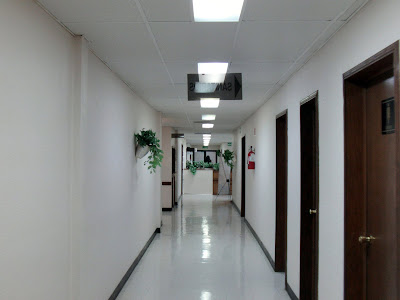El Centro de Odontología Estética y Ortodoncia Especializada esta dirigido por la Doctora Yanett L. Villafuerte García y el Doctor Raúl Avilés Gallegos desde hace más de 20 años. En los cuales ha tenido la oportunidad de servir exitosamente la comunidad de Reynosa, Tamaulipas y la del Valle del Sur de Texas. El Centro de Odontología se especializa en tratamientos de alta calidad odontologica, Estética Dental, Implantes, Ortodoncia y odontología en general. Ademas para su comodidad se localiza en el Centro Medico San Francisco justo enfrente del Puente Internacional que une la ciudad de Reynosa con la ciudad de Hidalgo, Texas. Otro punto de referencia que usted puede usar para llegar hasta el es el Hospital Regional del Rio el cual se encuentra al lado del Centro Médico San Francisco.
ESTHETIC AND ORTHODONTIC DENTISTRY IN REYNOSA
Doctor Yanett L. Villafuerte Garcia and Dr. Raul Aviles Gallegos are Odontologists specialized in high quality dental treatments, aesthethic dentistry, Make Overs,Implants, Orthodontics, and general dentistry. They are located in the Centro Medico San Francisco right infront of the International Bridge that connects the city of Reynosa with the city of Hidalgo, Texas.
7.6.11
OUR LOCATION IN REYNOSA- NUESTRA UBICACIÓN
Calle Pedro J. Méndez con Río Bravo # 100
2ndo Piso. Consultorio # 27
Colonia Del Prado
Cd. Reynosa, Tamaulipas, México.
Telephone:
From U.S.A. dial (956) 563-8034
de México (899) 922-7565
e-mail
Dr. Raúl Avilés Gallegos:
Dra. Yanett Loana Villafuerte García (orthodontist): yanettloana@hotmail.com
Centro Médico San Francisco se encuentra al lado del ¨Hospital Regional del Rio¨ y
enfrente del Puente Internacional que va de Reynosa a Hidalgo, Texas.
Telephone:
From U.S.A. dial (956) 563-8034
de México (899) 922-7565
Dr. Raúl Avilés Gallegos:
raulag4@hotmail.com
Dra. Yanett Loana Villafuerte García (orthodontist): yanettloana@hotmail.com
Centro Médico San Francisco se encuentra al lado del ¨Hospital Regional del Rio¨ y
enfrente del Puente Internacional que va de Reynosa a Hidalgo, Texas.
AESTHETIC DENTISTRY - ODONTOLOGIA ESTETICA
Aesthetic dentistry, also known as Cosmetic Dentistry is generally used to refer to any dental work that improves the appearance of your teeth, gums and/or smile. There are only dental specialties that predominantly focus on dental esthetics/cosmetics. They are : Prosthodontics and Orthodontics
Common Cosmetic Dentistry options
Cosmetic dentistry may involve:
1. the addition of a dental material to teeth or gums - examples: bonding, porcelain veneers (laminates), crowns (caps), gum grafts
2. the removal of tooth structure or gums - examples: enameloplasty etc, gingivectomy
3. neither adding nor removing dental materials, tooth structure or gums - examples: teeth whitening (bleaching).
4. straightening of teeth accompanied by improvement in appearance of face Orthodontics.
BEFORE
- Whitening, or "tooth bleaching", is the most common cosmetic dental procedure. While many whitening options are now available, including over the counter products, dentist-supervised treatments remain the recommended procedures for lightening discolored teeth.
- Tooth reshaping removes parts of the enamel to improve the appearance of the tooth. It may be used to correct a small chip, or to alter the length, shape or position of teeth; it can be used to correct crooked or excessively long teeth. The removed enamel is irreplaceable, and may sometimes expose dentin. It is also known as enameloplasty, odontoplasty, contouring, recontouring, slenderizing, stripping or sculpting. This procedure offers fast results and can even be a substitute for braces under certain circumstances
- Bonding is a process in which an enamel-like dental composite material is applied to a tooth's surface, sculpted into shape, hardened and then polished
- Dental bridges are false teeth, known as a pontics, which are fused between two porcelain crowns to fill in the area left by a missing tooth. The two crowns holding it in place that are attached onto your teeth on each side of the false tooth. This is known as a fixed bridge. This procedure is used to replace one or more missing teeth. Fixed bridges cannot be taken out of your mouth as you might do with removable partial dentures. In areas of your mouth that are under less stress, such as your front teeth, a cantilever bridge may be used. Cantilever bridges are used when there are teeth on only one side of the open space. Bridges can reduce your risk of gum disease, help correct some bite issues and even improve your speech. Bridges require your commitment to serious oral hygiene, but will last as many as ten years or more.
- Veneers are ultra-thin, custom-made porcelain laminates that are bonded directly to the teeth. They are an option for closing gaps or disguising discolored teeth that do not respond well to whitening procedures. Depending on the procedure, tooth reduction may be necessary
- Gum lift is a cosmetic dental procedure that raises and sculpts the gum line. The procedure involves reshaping the tissue and/or underlying bones to create the appearance of longer or more symmetrical teeth.
- Bite Reclamation Patients who have had years of excessive wear to their teeth due to grinding or acid reflux can alter their vertical dimension. This gives them a closed or shorter look to their face and smile. By opening up their bite, we can reclaim their vertical dimension and sometimes even remove unwanted wrinkles as well. This gives a more youthful appearance and can often eliminate the need of plastic surgery.
ORTHODONTICS / ORTODONCIA ESPECIALIZADA
Orthodontics is a type of dental treatment that is used to improve the appearance, position and function of crooked or abnormally arranged teeth.
An orthodontist is a dental surgeon who specialises in orthodontic treatment and makes use of a range of appliances, such as braces. These are used to correct the position of teeth over a period of time, usually between 18 months and two years.
In many cases, developmental problems with the teeth and jaw occur for no apparent reason. Alternatively, the development of the teeth and jaw can be damaged through an accident, such as a fall, or as a result of certain activities, such as thumb sucking that persists well into childhood.
In children, crooked or abnormally arranged teeth don't usually present an immediate health problem. However, over time these types of abnormality may affect the later development of the teeth, mouth and jaw.
This could lead to problems with everyday tasks, such as eating, or increase your risk of developing a serious dental condition, such as gum disease, or periodontitis (an infection of the jaw). See Useful links for more information on these topics.
Orthodontic treatment can improve the appearance of the teeth and face, and prevent any worsening of appearance.
Common reasons for treatment
Some of the most common reasons people are referred for orthodontic treatment are listed below.
- Protruding upper front teeth. This is one of the most common reasons for orthodontic treatment.
- Crowding. People with narrow jaws often find there is not enough space for their teeth, resulting in crowding.
- Impacted teeth. Impacted teeth are adult teeth that come through in the wrong position.
- Asymmetrical teeth. In some people, the centre of their upper and lower teeth do not match, giving their teeth an asymmetrical, or crooked, appearance.
- Deep bite. This is when the upper teeth cover the lower teeth too much.
- Reverse bite. This is when the upper teeth bite inside the lower teeth.
- Open bite. This is when the upper and lower front teeth do not meet when the mouth is closed. An open bite is often the result of prolonged thumb sucking.
¿When orthodontics should be done?
Usually, a course of orthodontic treatment will only be started after a child’s permanent teeth have developed. For most children, this will be when they are around 12 or 13 years old.
However, in some circumstances an orthodontist will recommend that treatment begins at an earlier age. Orthodontic treatment for adults can begin at any age.
¿QUE ES LA ORTODONCIA?
Los dientes son elementos esenciales. Los necesitamos para comer y hablar, así como para embellecer nuestras risas y sonrisas.
Sin embargo, las irregularidades dentarias entorpecen la masticación, fomentan las enfermedades periodontales (de las encías) y originan defectos de pronunciación. Además, según los expertos, dificultan la vida social de algunas personas, que no se expresan con soltura por creer que la falta de armonía de los dientes les afea la sonrisa.
Así pues, ¿qué hacer si tenemos los dientes mal alineados? ¿A quién se puede recurrir? ¿A qué edad? ¿Qué tratamientos hay? ¿Resultan dolorosos? ¿Son siempre necesarios?
Existe una rama de la odontología dedicada a la corrección de las irregularidades dentarias esta especialidad es llamada Ortodoncia.
Las malformaciones las tratan hoy en día el ortodoncista, el cual conoce bien el crecimiento y la evolución de la dentadura y las mandíbulas, así como de los músculos y tejidos próximos.
La ortodoncia se define, con más precisión técnica, como la “rama de la odontología que se dedica a la supervisión, guía y corrección de las estructuras dentofaciales en crecimiento o maduras”. Abarca “el ajuste de las relaciones existentes entre los dientes, y entre estos y los huesos faciales; para ello, puede aplicar fuerzas o estimular las fuerzas funcionales dentro del complejo craneofacial e incluso modificar su dirección”.
Así pues, mediante aparatos hechos a la medida, el ortodoncista de La CLINICA DENTAL TEXAS aplica fuerzas a los dientes o a las estructuras que los rodean. Las anomalías se corrigen desplazando los dientes, e incluso los huesos, a la posición correcta.
Suscribirse a:
Comentarios (Atom)










